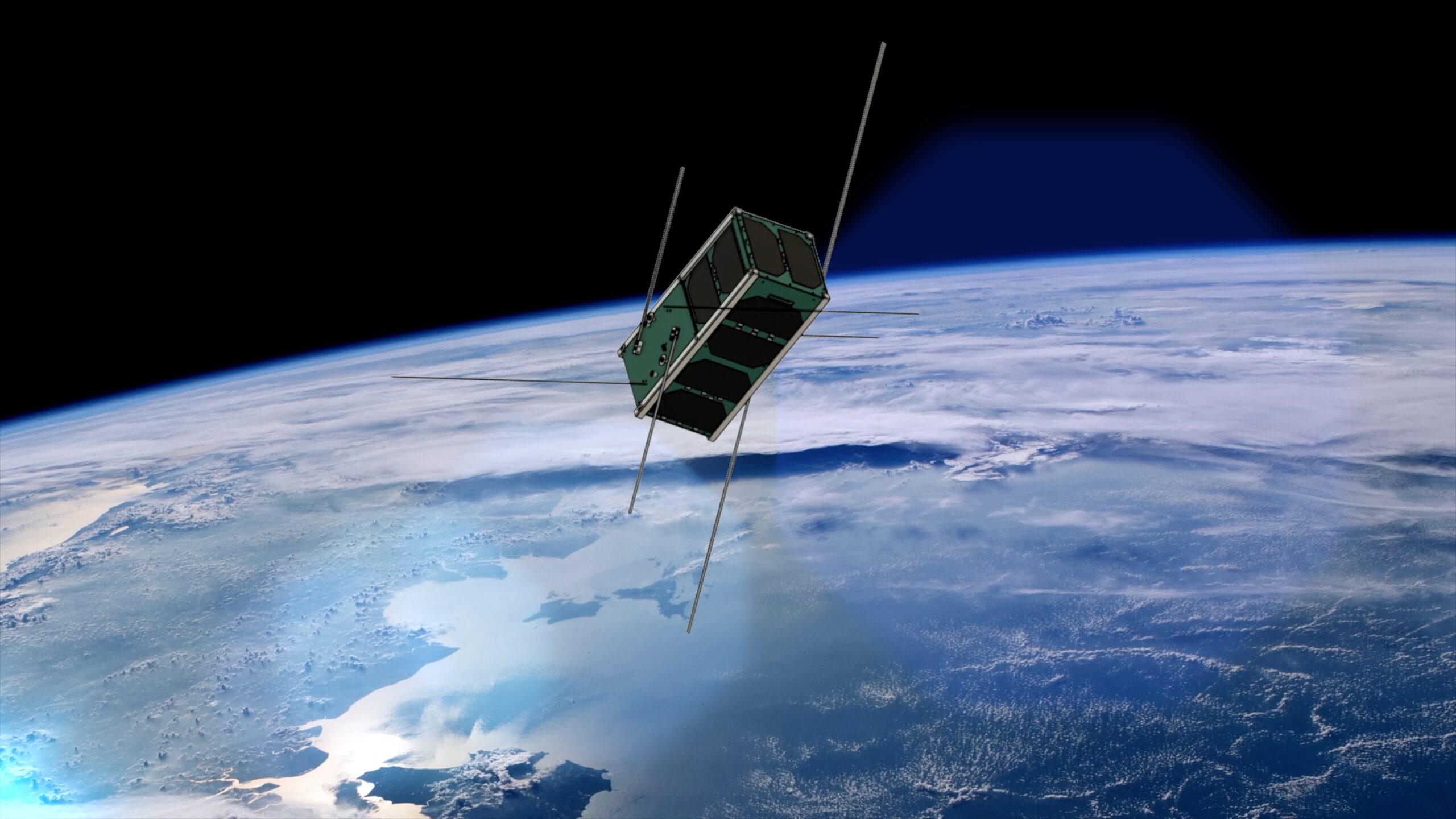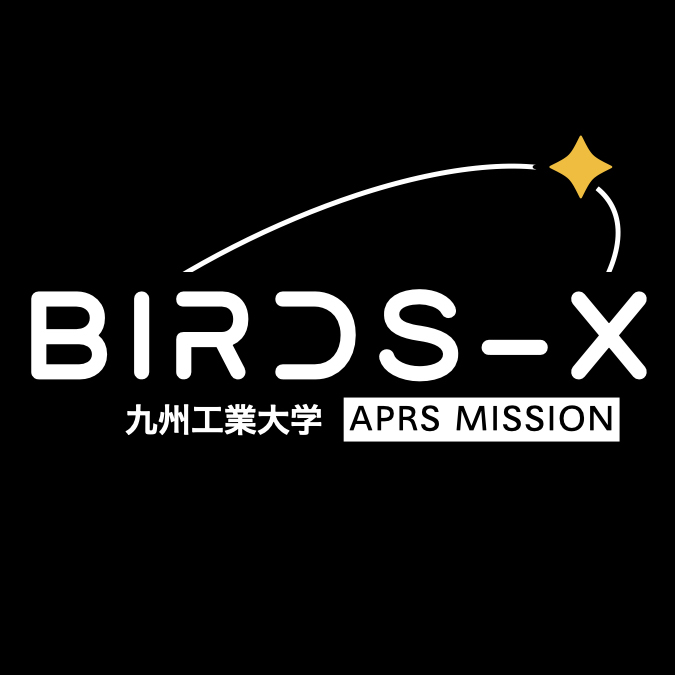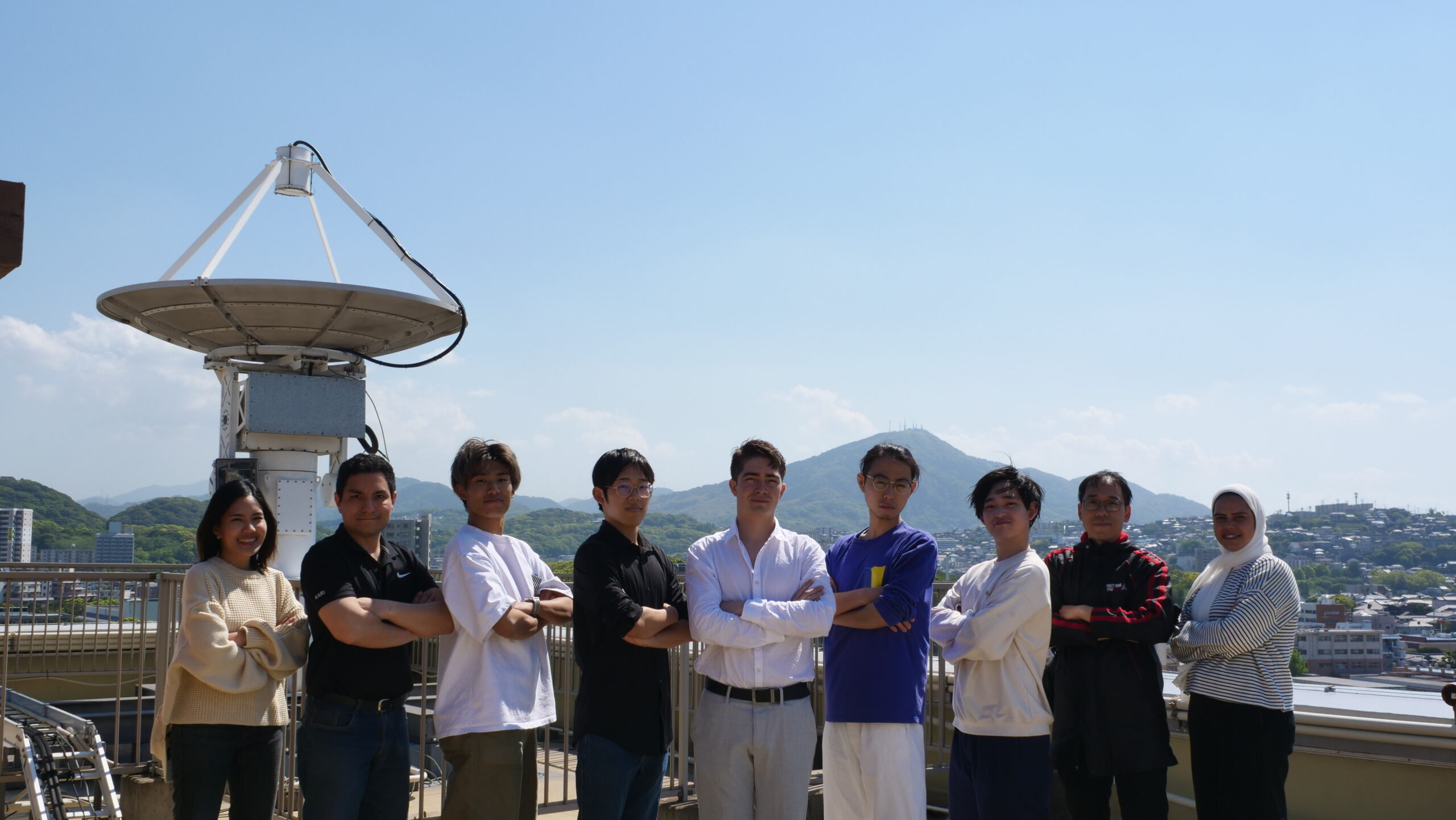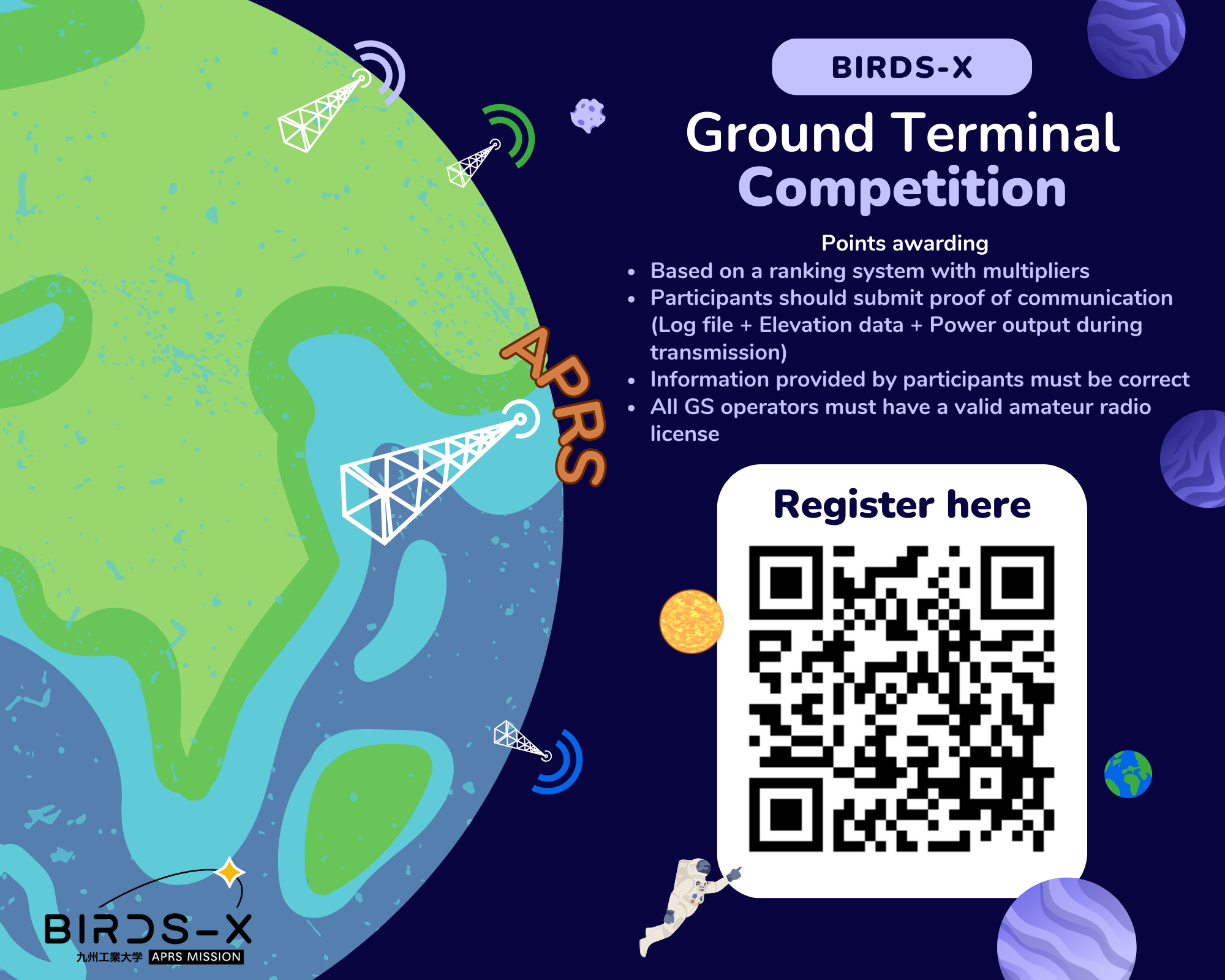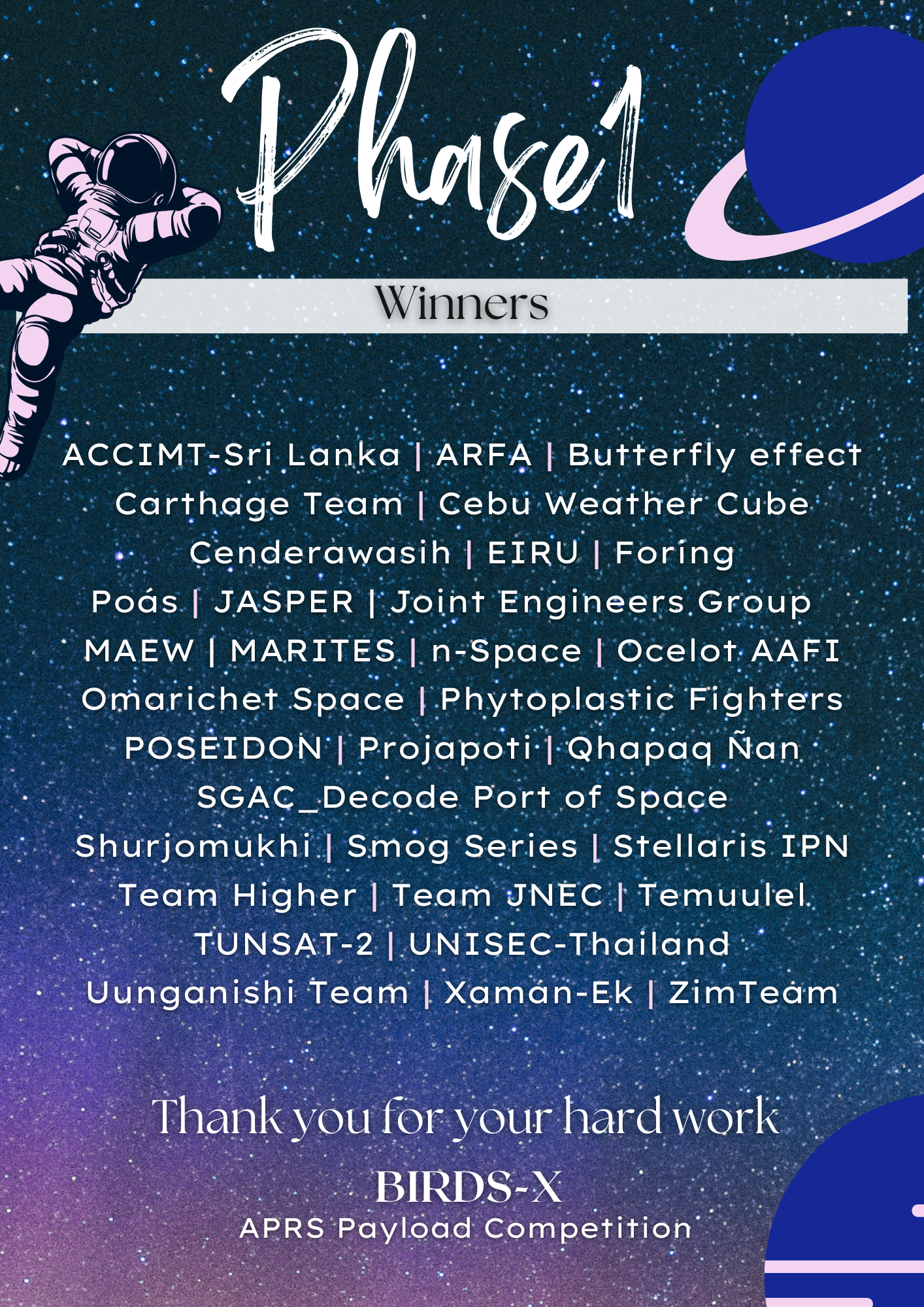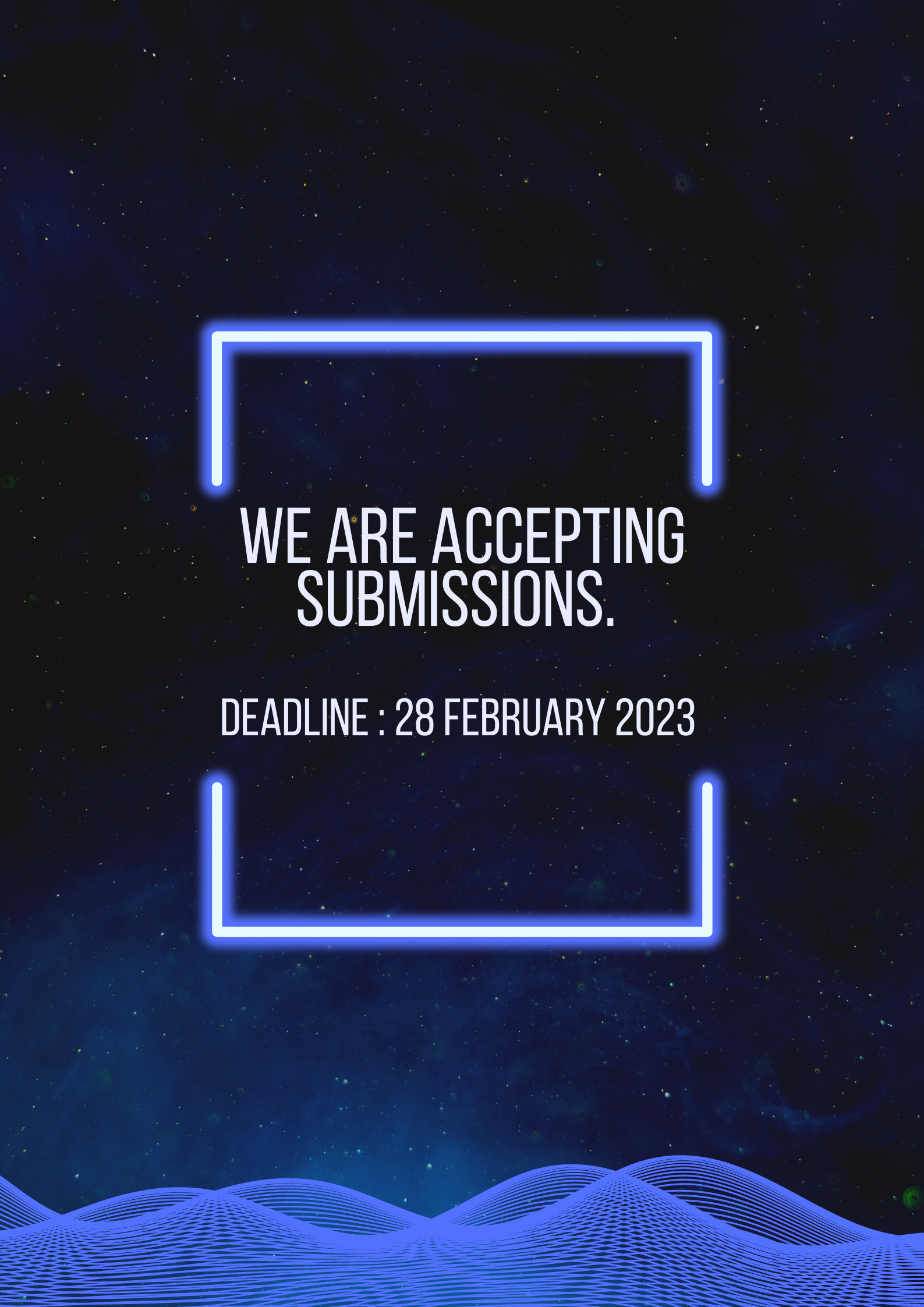The BIRDS-X Project proudly announces the Ground Terminal Competition, presenting an opportunity for anyone to demonstrate their expertise and propel the frontiers of satellite communication. The competition is open to any amateur radio license holder. We invite you to upgrade/update your amateur radio station or build your ground terminal to perform satellite communications using amateur radio bands. The competitors can transmit and receive messages via the Automatic Packet Report System (APRS) repeater installed onboard the Dragonfly satellite. This process of sending and receiving information packets is known as “digipeating.”
This is BIRDSX
BIRDS-X project is a 2U CubeSat dedicated to amateur radio communication. Our stakeholders are Kyushu Institute of Technology (Kyutech) and the Association for Radio Digital Communications (ARDC). The goal of our project is to bring diversity to the space sector and democratize the usage of space.

1
Mission
We have the four missions.
2
About us
Kyushu institute of technology
3
Time line
This project was started.
-
APRS Payload Competition 2nd Phase
Issue: BIRDS-X APRS Payload Competition 2nd Phase Selection Results
Dear Participants.
We are glad to inform you that the evaluation process for the second phase of the APRS Payload Competition has been completed, and 11 teams have been selected!
We would like to congratulate you on being selected for this new stage and wish you luck in developing the Engineering Model Board.
2nd Phase Winners:
JASPER — Canada
MARITES – Philippines
Xaman-Ek – Mexico
ACCIMT – Sri Lanka
Poás – Costa Rica
Smog Series – Hungary
Stellaris IPN – Mexico
Qhapac Ñam – Peru
EIRU-4S – Paraguay
Zimteam – Zimbabwe
Butterfly Effect – EgyptTo all the participants, we want to thank you for your applications; BIRDS-X received several high-level applications, which made a very difficult and competitive selection.
We encourage you to continue the excellent work and outreach of APRS and Amateur Radio communications.
Kind regards,
BIRDS-X Team. -
The APRS Competitions
The call for the participation to the two competitions is open to the amateur radio operators of the world.
The participants to the APRS mission payload competition are down-selected to five based on various criteria, such as technical soundness, mission concept, contribution to promotion of amateur radio communication awareness, etc.. Once the satellite is in orbit, how many data packet each payload can receive is compared.
Anybody can join the APRS ground terminal competition as long as they have a proper radio license. How many data packet can be received at the satellite by the Kyutech-designed APRS payload, called the reference APRS payload, is compared.
For both the competitions, the reception of data will be confirmed either by APRS digipeater or Store-and-Forward.
-
Webinar Presentation
Please find the webinar presentation on April 21st here
-
Phase 2 Application
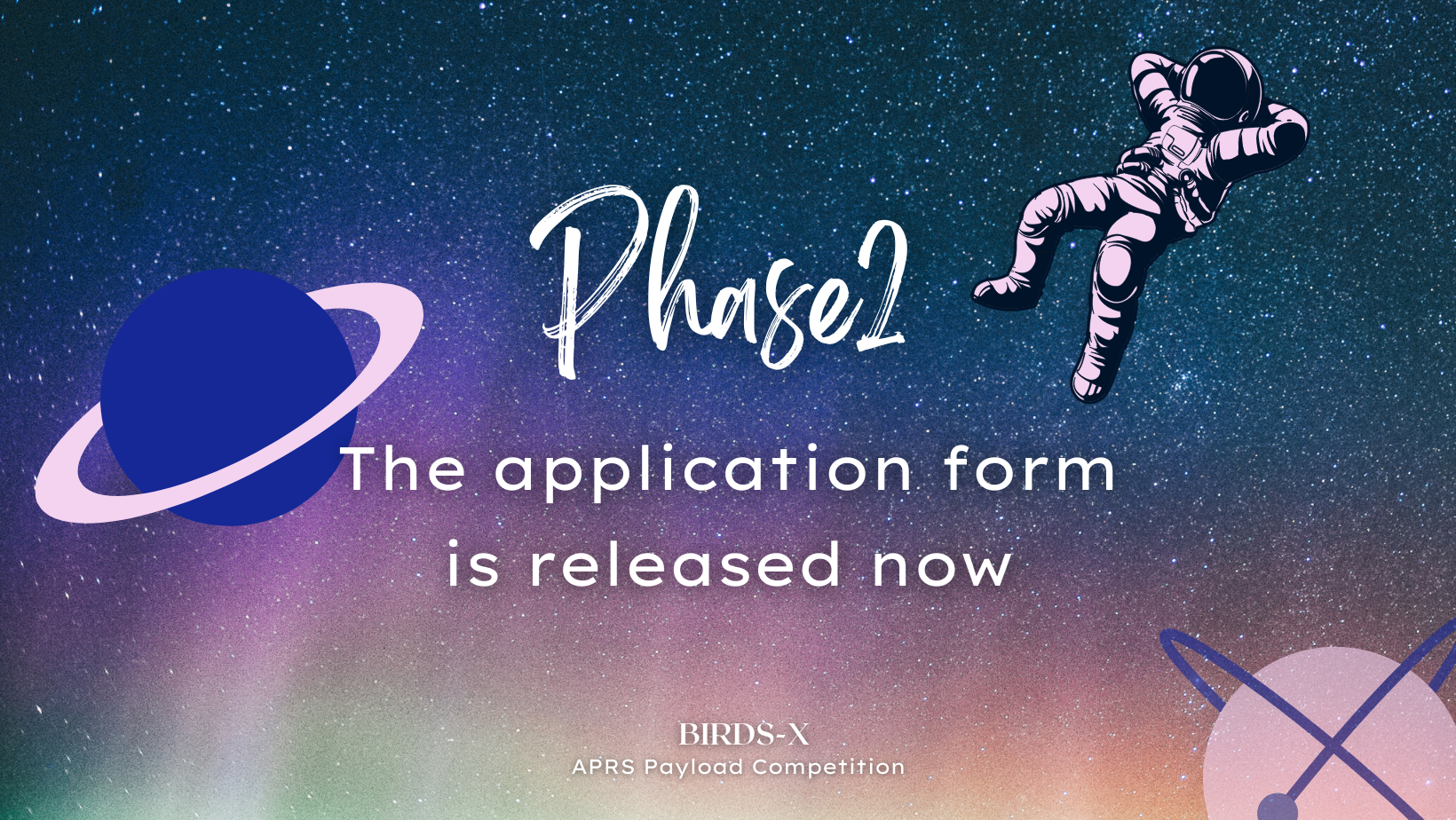
Please find the application form from here. Please fill the required information.
Submit Phase 2 Application Form HERE
